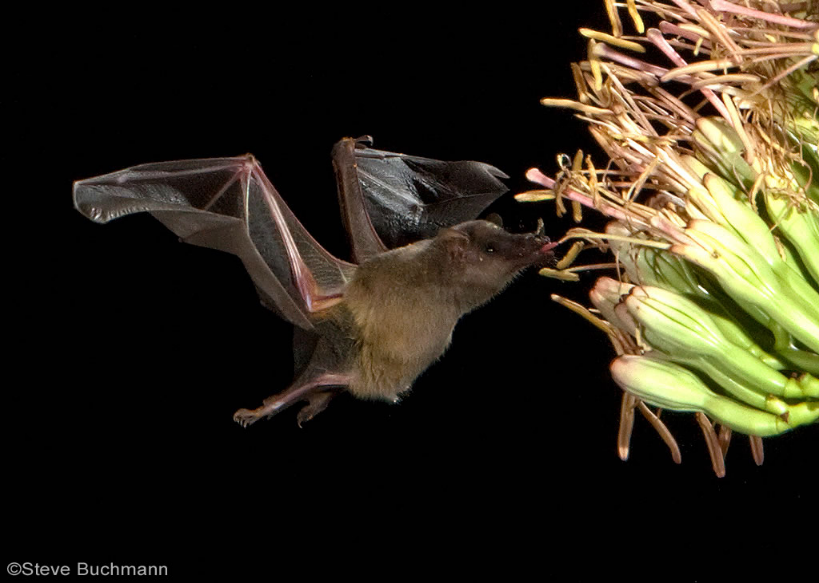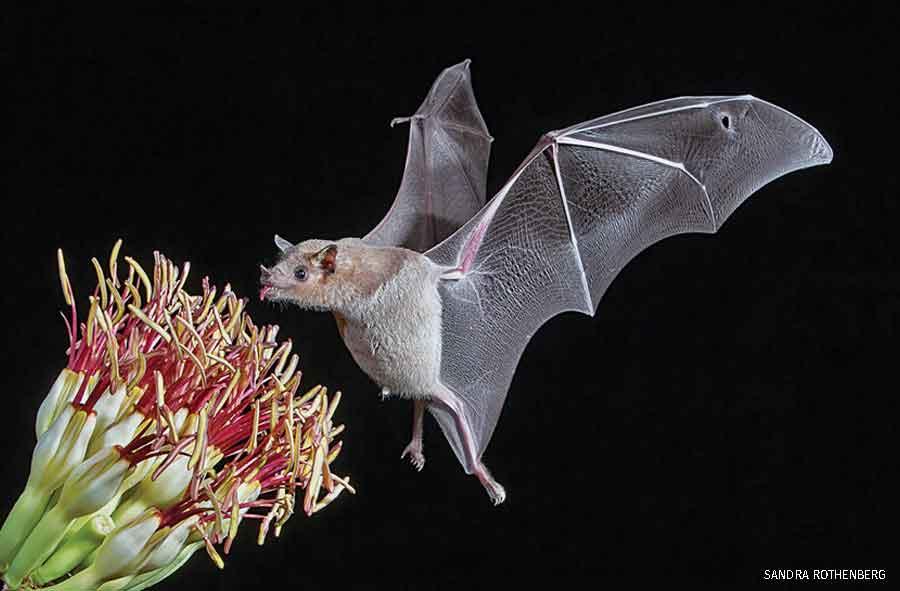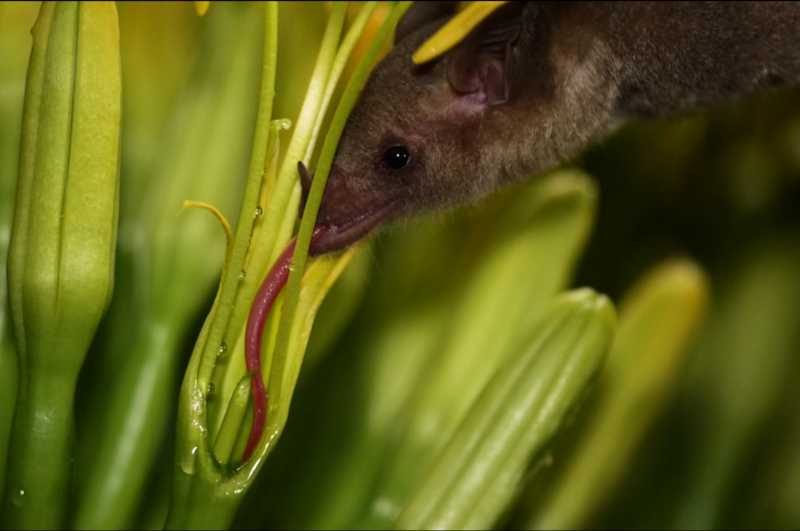Text by Milu Velardi
When you think of bats, what comes to mind? Blood sucking? Mosquito eating? These are in fact true attributes of bats – most definitely the mosquito eating – here in New Mexico. Though we do not have any vampire bats here, insectivorous bats make up the majority of the 29 species that reside in our state. But did you know that we are also home to three kinds of nectar feeding bats? Found only in the southern part of the state, the Lesser long-nose bat (Leptonycteris yerbabuenae), the Greater long-nosed bat (Leponycteris nivalis) and the Mexican long-tongued bat (Choeronycteris mexicana) feed on the nectar-plentiful flowers of desert plants in New Mexico.

These species of bats serve as primary pollinators for several species of agave. Adapted for specialized feeding, they migrate north from Mexico to follow bloom periods. Exceptionally strong and agile in flight, they can hover much like hummingbirds as they feed on the night-blooming flowers. And as they feed, they both consume and collect pollen on their fur as they move from plant to plant. The consumption of pollen provides the bat with vitamins and minerals as well as extra protein, while the nectar itself supplies the sugar.

To observe these pollinating bats in New Mexico, you will need to travel south. The Lesser long-nosed and Greater long-nosed bats are primarily found in Hidalgo County in the southwestern corner of the state – near the Animas, Big Hatchet, and Peloncillo Mountains. Recent research on the Lesser long-nosed bat, however, has documented an expansion of their range into northern Grant County, with sightings along the Gila River. The Mexican long-tongued bat is primarily found only in areas like the Big Hatchet Mountains. New research is shedding light on the ranges of these elusive night-time feeders as their habits and migratory patterns are the focus of growing research with the concern of the health and preservation of agave and other flowering cacti in the southwest United States.

Milu Velardi is a certified wildlife biologist originally from Colorado. She currently works within LANL’s biological resources team assisting in threatened and endangered species compliance and migratory bird work. When not at the lab, Milu enjoys caving with bats, trail running, movie watching, and general eating. Since she is always looking at the sky for birds or following mammal tracks in the mud, hiking with her can be challenging, but that’s one of the many highlights of living and working in Los Alamos.

3 or 4 days ago bats began draining 1 of my hummingbird feeders. On west side of my house near giant Desert Bird of Paradise just south of Silver City line in Grant Co.
How interesting! I’m curious- how do you know the culprits are bats? I’ll need to ask around to see if there’s some ideas about why that might be happening. Thanks for sharing, and let us know if the situation changes!
It is most likely the lesser long-nosed bat (Leptonycteris yerbabuenae). In recent years, research has shown an expansion of its range into places further north than previously thought. Very exciting!
Nectar feeding bats are notorious for draining hummingbird feeders. While it can provide calories for bats, it’s important to keep the feeders clean for both the bats and the hummingbirds.
I’ve noticed that my humming bird feeder was being emptied at night ! On the third night I went out to see if I could determine what animal might be doing this. At around 10:30 pm I stepped out under the porch and experienced a number of bats flying closely around me making quite q noise . I turned on my flashlight and found several bars swooping about the hummingbird feeder.
Not sure which species of bat as they were moving so swiftly and I couldn’t get a got sighting on them.